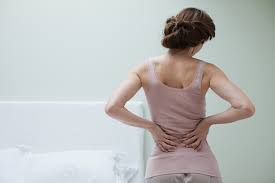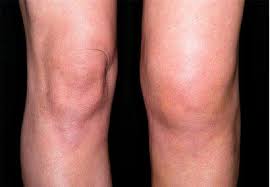

WHICH PART IS CONSIDERED ‘LOWER BACK’?
Lower back pain is an incredibly prevalent health issue that affects millions of people worldwide. According to studies, it is estimated that approximately 80% of adults will experience lower back pain at some point in their lives. This makes it one of the most common reasons for seeking medical attention and time off from work.
The impact of lower back pain on daily life can be profound and far-reaching. It not only causes physical discomfort but also affects one’s emotional well-being and overall quality of life.
Key aspects of the prevalence of lower back pain and its impact on daily life
- Work Productivity
- Physical Limitations
- Emotional Impact
- Sleep Disturbances
- Financial Burden
- Reduced Physical Activity
The basic anatomy of the lower back : A simple overview of their roles in supporting the body and facilitating movement.
- Spinal Column: The spinal column, often referred to as the backbone, is the central pillar of the human body. It is composed of a series of individual bones called vertebrae, which are stacked on top of each other. The spinal column serves as the main framework that supports the weight of the body and provides structural stability.
- Vertebrae: The vertebrae are small, bony segments that make up the spinal column. In the lower back, there are five vertebrae, labeled L1 to L5, numbered from the top to the bottom. These vertebrae are larger and more robust compared to those in the upper spine and are designed to bear a significant amount of body weight.
- Intervertebral Discs: Intervertebral discs are soft, gel-like cushions located between adjacent vertebrae. They act as shock absorbers and help distribute pressure and forces exerted on the spine during movements like walking, running, or lifting.
- Nerve Roots: Nerve roots are the branches of spinal nerves that extend from the spinal cord and exit the spinal column through small openings between adjacent vertebrae. In the lower back, these nerve roots form the sciatic nerve, which is the largest nerve in the body. The sciatic nerve is responsible for transmitting signals from the lower back down through the legs and feet, enabling sensations and muscle movements.
How everyday activities, sports, or lifting heavy objects can cause muscle strains or sprains, leading to lower back pain
Everyday activities, sports, and lifting heavy objects can potentially lead to muscle strains or sprains in the lower back due to the significant stress placed on the muscles, ligaments, and other structures supporting the spine.
Understanding how these injuries occur can help individuals take preventive measures and practice proper body mechanics to reduce the risk of lower back pain.
Here’s an explanation of how these activities can lead to muscle strains or sprains:
- Incorrect Lifting Technique – When lifting, especially with poor posture or by using the back muscles instead of the legs, excessive pressure is placed on the lower back. This can lead to overstretching or tearing of the muscles or ligaments supporting the spine, resulting in a muscle strain or ligament sprain.
- Sudden or Forceful Movements – Engaging in sports that involve sudden or forceful movements, such as twisting, bending, or jumping, can strain the lower back muscles and ligaments. Activities like golf, tennis, or basketball often require quick and explosive movements, and if not performed with proper form and preparation, they can cause injuries to the lower back.
- Prolonged Sitting or Standing – Remaining in a static position for extended periods, whether sitting or standing, can strain the lower back muscles. Poor ergonomics or inadequate lumbar support while sitting can exacerbate the issue, leading to muscle fatigue and discomfort.
- Repetitive Movements – Certain occupations or daily activities involve repetitive movements that can overwork the muscles in the lower back. Examples include repetitive lifting, bending, or twisting in jobs like construction, warehousing, or gardening.
- Sports Impact or Collision – High-impact sports, such as football or rugby, where collisions with other players are common, can subject the lower back to significant forces. These impacts can lead to muscle strains or sprains and, in some cases, even more severe injuries like herniated discs.
- Insufficient Warm-up or Stretching – Failing to warm up properly before engaging in physical activities or sports can increase the risk of lower back injuries. Cold muscles are more prone to strains and sprains, so warming up and stretching can help prepare the muscles and reduce the likelihood of injury.
- Overexertion – Overexerting oneself during physical activities or weightlifting can strain the lower back muscles beyond their capacity. Pushing the body to its limits without allowing for proper rest and recovery can lead to muscle fatigue and potential injuries.
- Weak Core Muscles – A weak core, which includes the muscles in the abdomen, lower back, and pelvis, can make the lower back more susceptible to strains. A strong core provides stability and support to the spine during various activities, reducing the risk of overloading the lower back muscles.
To prevent muscle strains or sprains and lower back pain, it is essential to adopt proper lifting techniques, engage in regular exercise to strengthen the core and back muscles, and use ergonomic equipment and posture at work and during physical activities. Additionally, maintaining a healthy lifestyle, including a balanced diet and staying hydrated, can support overall muscle and joint health, reducing the likelihood of injuries in the lower back.
Disc herniation
Disc herniation, also known as a herniated disc or slipped disc, is a common spinal condition that occurs when the soft inner core of an intervertebral disc pushes out through a tear or weakness in the tough outer ring of the disc. This protrusion can irritate nearby nerves and cause various symptoms, particularly when the herniated disc presses against the spinal nerves. Disc herniation typically occurs in the lumbar spine (lower back) but can also affect the cervical spine (neck) or thoracic spine (upper back), although less frequently.
Symptoms of Disc Herniation:
- Radiating pain down the back of the leg, following the sciatic nerve, which is why it’s commonly referred to as sciatica. In cervical disc herniation, the pain may radiate down the arm.
- Numbness and Tingling. A herniated disc in the lower back may cause numbness or tingling in the buttocks, thigh, calf, or foot. In cervical disc herniation, numbness and tingling may occur in the shoulder, arm, or hand.
- Muscle Weakness: The pressure on spinal nerves from a herniated disc can result in muscle weakness in the affected area. This weakness may lead to difficulty lifting or holding objects, and in severe cases, it may cause problems with balance and coordination.
- Back Pain: The pain may worsen with movements that put pressure on the disc or during certain activities.
- Worsening Pain with Specific Movements: Certain movements, such as bending forward, lifting, or sitting for extended periods, can exacerbate the pain caused by disc herniation.
- Loss of Reflexes: In some cases, disc herniation can affect reflexes controlled by the affected nerves.
An overview of spinal stenosis
Spinal stenosis is a medical condition characterized by the narrowing of the spinal canal, which houses and protects the spinal cord and nerve roots. This narrowing can lead to the compression of the spinal cord and nerves, resulting in various neurological symptoms. Spinal stenosis can occur in different regions of the spine, but it most commonly affects the lumbar (lower back) and cervical (neck) regions.
Spinal stenosis can be caused by various factors, including:
- Degenerative Changes: Over time, wear and tear, as well as the breakdown of spinal discs, can lead to the growth of bone spurs (osteophytes) and the thickening of ligaments within the spinal canal, narrowing the available space.
- Herniated Discs: A herniated or slipped disc, where the soft inner core of the disc protrudes through a tear in the outer ring, can contribute to spinal stenosis by reducing the space within the spinal canal.
- Congenital Narrowing: In some cases, individuals may be born with a narrower spinal canal, making them more prone to developing spinal stenosis later in life.
- Spinal Injuries: Traumatic injuries, such as fractures or dislocations, can cause misalignments or bone fragments that encroach upon the spinal canal.
- Tumors or Abnormal Growths: Uncommonly, tumors or abnormal growths within or near the spinal canal can cause compression and narrowing.
Effects of Spinal Stenosis on Nerve Compression: When the spinal canal narrows, it can lead to compression of the spinal cord and nerves, which can result in various neurological symptoms.
The specific effects of nerve compression can vary depending on the location of the stenosis:
Lumbar Spinal Stenosis:
- Leg Pain : The compression of the nerve roots in the lumbar region can lead to pain, weakness, or numbness in the lower back, buttocks, and legs. This pain often worsens with standing or walking and improves with sitting or bending forward.
- Sciatica: If the sciatic nerve (which runs through the lower back and down the legs) is affected, it can cause sharp, shooting pain down one or both legs, known as sciatica.
Cervical Spinal Stenosis:
- Neck Pain: Compression of the spinal cord or nerve roots in the neck region can cause neck pain and stiffness.
- Radiating Arm Pain: Nerve compression in the cervical region may lead to pain, tingling, or weakness that radiates down the arm or into the hands.
- Hand Coordination Issues: In severe cases, cervical spinal stenosis can lead to problems with fine motor skills and coordination in the hands.
Degenerative disc disease
Degenerative disc disease (DDD) is a condition characterized by the gradual breakdown of intervertebral discs, which act as shock absorbers and provide flexibility to the spine.
Several causes and factors contribute to the development of degenerative disc disease:
- Age-related Changes: As we age, the discs lose water content and become less hydrated, leading to a reduction in their height and elasticity. This process is known as disc desiccation. As a result, the discs become less effective in absorbing shock and providing support to the spinal vertebrae.
- Wear and Tear: Over the years, daily activities and repetitive movements can cause wear and tear on the intervertebral discs. Activities like bending, lifting, and twisting put stress on the discs, leading to small tears or fissures in the outer layer of the disc, called the annulus fibrosus. These tears can contribute to disc degeneration over time.
- Genetics: Some people may inherit genes that make their discs more prone to early degeneration or accelerated wear and tear.
- Poor Posture and Body Mechanics: Maintaining poor posture, especially over long periods, can contribute to the breakdown of the intervertebral discs. Incorrect body mechanics, such as lifting heavy objects with the back instead of the legs, can also put undue stress on the discs.
- Obesity: Excess body weight can increase the load on the spinal discs, accelerating their degeneration.
- Sedentary Lifestyle: Lack of regular physical activity and a sedentary lifestyle can weaken the muscles that support the spine. Weak muscles fail to provide proper support to the spinal structures, leading to increased stress on the intervertebral discs.
- Smoking: It is believed that the harmful chemicals in cigarettes can interfere with the blood supply to the discs, impairing their ability to receive nutrients and repair themselves.
- Trauma or Injury: Severe traumatic events, such as accidents or falls, can damage the intervertebral discs and accelerate their degeneration. Injuries that cause fractures or instability in the spine can also contribute to the breakdown of the discs.
Sciatic nerve and its role in transmitting signals to the lower back and legs, leading to sciatic pain.
Role in Transmitting Signals: The sciatic nerve plays a crucial role in transmitting signals between the brain and the lower back, buttocks, legs, and feet. It is a mixed nerve, meaning it contains both sensory and motor nerve fibers. Here’s how the sciatic nerve functions in signal transmission.
Sciatic Pain and Compression: Sciatic pain, commonly referred to as sciatica, occurs when there is irritation, inflammation, or compression of the sciatic nerve or its nerve roots. Several factors can lead to sciatic pain, including:
- Herniated Disc: When the inner core of an intervertebral disc protrudes through its outer layer, it can press on the adjacent nerve roots, including those forming the sciatic nerve. This compression leads to radiating pain along the path of the nerve, typically down the back of one leg.
- Spinal Stenosis: Spinal stenosis, a condition characterized by the narrowing of the spinal canal, can compress the nerve roots that form the sciatic nerve.
- Piriformis Syndrome: The piriformis muscle is a deep muscle located in the buttocks, and the sciatic nerve runs very close to it. In some cases, the piriformis muscle can become tight or spasmodic, causing it to compress or irritate the sciatic nerve, resulting in sciatica.
- Degenerative Disc Disease: As mentioned earlier, degenerative changes in the spine can lead to the breakdown of intervertebral discs. These changes may result in bone spurs or other structural abnormalities that can impinge upon the sciatic nerve.
Sciatic pain is often described as a sharp, shooting, or burning pain that radiates from the lower back down through the buttocks and into one or both legs. Other symptoms can include numbness, tingling (paresthesia), burning sensation and muscle weakness. The intensity and distribution of sciatic pain can vary depending on the underlying cause and the degree of nerve compression.
To manage these conditions and their associated symptoms, individuals can focus on maintaining a healthy lifestyle, including regular exercise, maintaining a healthy weight, practicing proper body mechanics, and avoiding activities that exacerbate symptoms.
Physical therapy, pain management techniques, and, in some cases, surgery may be recommended for individuals with severe symptoms that do not respond to conservative measures.
As for sciatica, addressing the underlying cause of the nerve compression and may include conservative measures such as rest, physical therapy, pain medications, and epidural injections.
Food supplements like Collagen peptides and glucosamine chondroitin play are also useful in resolving most of these conditions by repairing, regenrating and healing the damaged or degenerated discs.

Knowledge is power. We believe in helping prospective buyers make an informed decision before purchase. We also invest time on researching quality supplements with a proven record that will show results to my esteemed clients.


